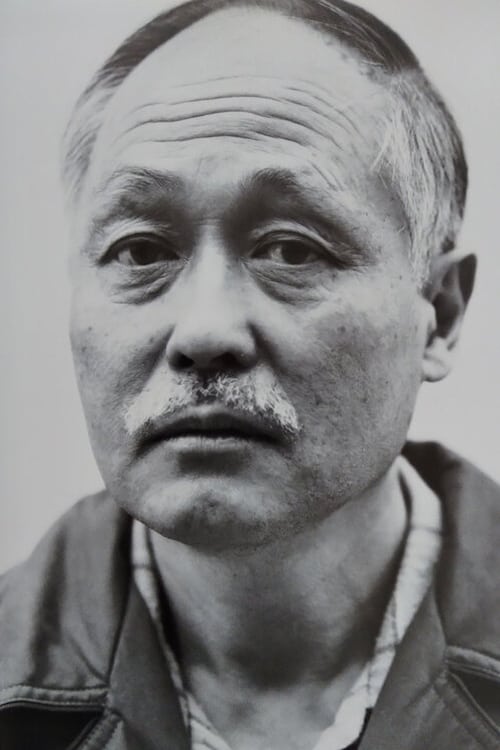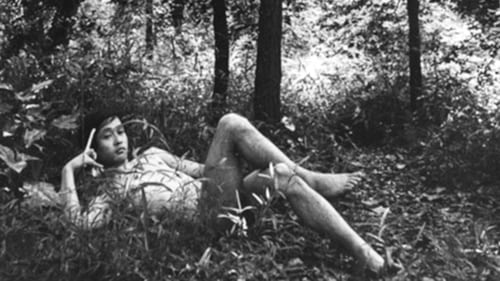
Michio Okabe
略歴
Michio Okabe (1937-2020) began his activities as an artist in the mid-1960s, participating in the contemporary artist group Off Museum. He interacted with groups such as Neo-Dada and Hi Red Center, as well as artists like Ushio Shinohara, and presented at Yomiuri Independent exhibition (1964), Big Fight exhibition (1965), a solo exhibition at Naiqua Gallery (1965), as well as street performances. Influenced by Kenneth Anger’s Scorpio Rising (1963), Okabe made his first film work Tenchi Sozosetsu (creation tale, 1965), which received a prize at the Sogetsu experimental film festival. Thereafter he made Crazy Love (1968), Camp (1970), Shiroyo Dokoe Iku (Shiro, where are you going, 1970), Shonen Shiko (1973, won a grand prize at Knokke-le-Zoute International Film Festival), Saijiki (1973), and Kaisoroku (1977). The works that sublimate Susan Sontag’s thinking on camp into Okabe’s original camp aesthetic, have been highly received and have screened in Japan and abroad. Besides film production, Okabe published fantastical short stories through reading programs on radio, magazines, fantasy literature anthologies, as well as his own book. Okabe passed away in September, 2020.

Director
Michio Okabe, considered an icon of 1960s Japanese underground cinema, pursued the principle of subjective cinema by combining images that interested him cinematically and roles that he wanted to play himself. In MEMOIR the artist’s fantasies of the late 1970s are featured in a chaotic chain of images. (Go Hirasawa)

Director
In an esoteric temple, grown men return to their boyhood and play innocently. Model aeroplanes, paper butterflies, vehicles, tin toys... the things that boys like emerge from the darkness. A short film that visualises dreams of a distant boyhood with a unique aesthetic.

Director
A unique road movie that took two years to make, based on the concept of "filming the changing seasons like a haiku poem". The men's journey, consisting of four parts - The Wandering Vampire, Yuugyo, The Lonely Journey and Habodashi Yakusha Hoboki - creates a surreal alternate world amidst the beauty of nature. The cast includes Sotobayama Fumiaki of the underground theatre company Harumidashi Gekijo, folk singer Mikami Hiroshi, Zero Dimensional, Oe Masanori and many others.

Director
Michio Okabe's only 8mm film, which was miraculously discovered in 2021 at the back of a closet in his room, after being unaccounted for and thought lost for a long time. He tied an 8mm camera around the neck of his dog Shiro and recorded the world as seen from the dog's point of view. Okabe's anarchy, in which he abandoned-looking through the viewfinder himself and let the dog shoot the film, is the quintessence of Okabe's work.

Director
The title is a phonetical arrangement in kanji Chinese characters of camp, a concept synonymous with Michio Okabe. Okabe radically explores his distinct, Japanese camp aesthetic in the enclosed space of the film world. As written in the kanji, “precious night, wealth of dreams” (貴い夜、夢の富), inhabitants of the night world such as butoh dancer, gay character, night watch, violinist, masseuse, yakitori shop, vampire, dog, and cat, appear one after another and unfold a disastrous but beautiful soirée.

Correlated with Susan Sontag's theorization of kitsch as well as employing the queer lingo of "camp," this film's relentless equal opportunity pop-art montage shattered the foundations of conventional cinema, making it a true document of the Shinjuku underground scene. Director Okabe himself appears recreating his favorite roles from Bonnie and Clyde to Spaghetti Westerns, as well as incorporating quotations by inserting stills of Godard, Kennedy’s assassination and the Vietnam War.

Camera Operator
Correlated with Susan Sontag's theorization of kitsch as well as employing the queer lingo of "camp," this film's relentless equal opportunity pop-art montage shattered the foundations of conventional cinema, making it a true document of the Shinjuku underground scene. Director Okabe himself appears recreating his favorite roles from Bonnie and Clyde to Spaghetti Westerns, as well as incorporating quotations by inserting stills of Godard, Kennedy’s assassination and the Vietnam War.

Editor
Correlated with Susan Sontag's theorization of kitsch as well as employing the queer lingo of "camp," this film's relentless equal opportunity pop-art montage shattered the foundations of conventional cinema, making it a true document of the Shinjuku underground scene. Director Okabe himself appears recreating his favorite roles from Bonnie and Clyde to Spaghetti Westerns, as well as incorporating quotations by inserting stills of Godard, Kennedy’s assassination and the Vietnam War.

Producer
Correlated with Susan Sontag's theorization of kitsch as well as employing the queer lingo of "camp," this film's relentless equal opportunity pop-art montage shattered the foundations of conventional cinema, making it a true document of the Shinjuku underground scene. Director Okabe himself appears recreating his favorite roles from Bonnie and Clyde to Spaghetti Westerns, as well as incorporating quotations by inserting stills of Godard, Kennedy’s assassination and the Vietnam War.

Writer
Correlated with Susan Sontag's theorization of kitsch as well as employing the queer lingo of "camp," this film's relentless equal opportunity pop-art montage shattered the foundations of conventional cinema, making it a true document of the Shinjuku underground scene. Director Okabe himself appears recreating his favorite roles from Bonnie and Clyde to Spaghetti Westerns, as well as incorporating quotations by inserting stills of Godard, Kennedy’s assassination and the Vietnam War.

Director
Correlated with Susan Sontag's theorization of kitsch as well as employing the queer lingo of "camp," this film's relentless equal opportunity pop-art montage shattered the foundations of conventional cinema, making it a true document of the Shinjuku underground scene. Director Okabe himself appears recreating his favorite roles from Bonnie and Clyde to Spaghetti Westerns, as well as incorporating quotations by inserting stills of Godard, Kennedy’s assassination and the Vietnam War.

Producer
Borrowing the title from John Huston’s The Bible: in the Beginning (1966) (Tenchi Sozo in Japanese), Okabe aimed to paint the zeitgeist of the period by collecting and exposing the world around him and himself.

Writer
Borrowing the title from John Huston’s The Bible: in the Beginning (1966) (Tenchi Sozo in Japanese), Okabe aimed to paint the zeitgeist of the period by collecting and exposing the world around him and himself.

Borrowing the title from John Huston’s The Bible: in the Beginning (1966) (Tenchi Sozo in Japanese), Okabe aimed to paint the zeitgeist of the period by collecting and exposing the world around him and himself.

Director
Borrowing the title from John Huston’s The Bible: in the Beginning (1966) (Tenchi Sozo in Japanese), Okabe aimed to paint the zeitgeist of the period by collecting and exposing the world around him and himself.


